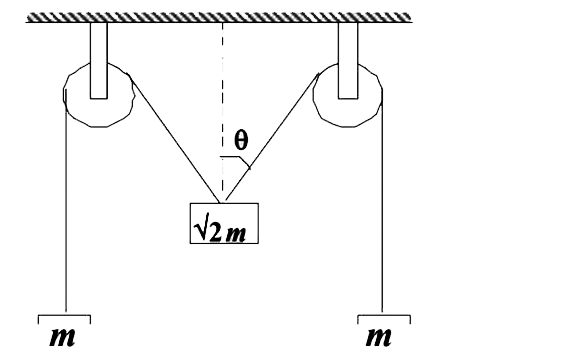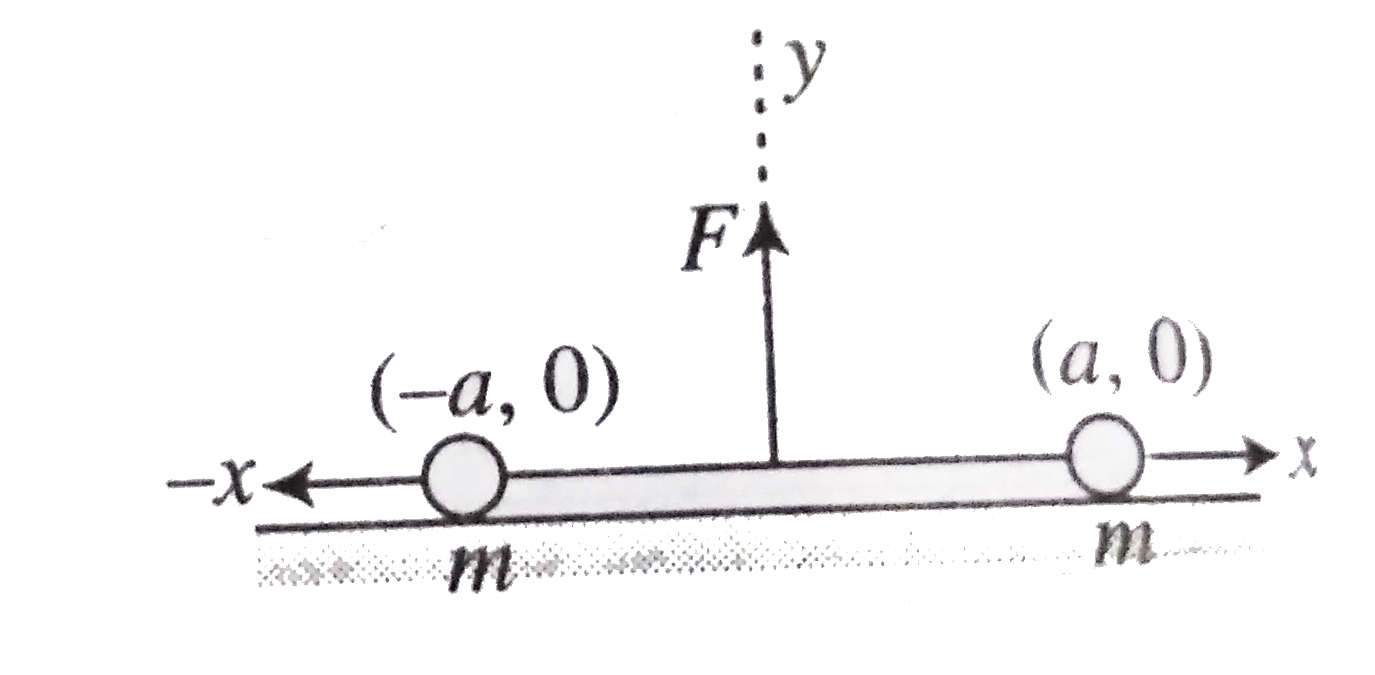Complete Solutions to Single correct answer type of chapter NEWTON'S LAWS OF MOTION 2 of Class 11 book with complete answers and questions
| Class 11 | PHYSICS |
| Chapter | NEWTON'S LAWS OF MOTION 2 |
| CENGAGE PHYSICS | Single correct answer type |
| Number Of Questions | 13 |
| Academic Year | 2023-24 |
A ship of mass `3xx10^7kg` initially at rest, is pulled by a force of `5xx10^5N` through a distance of `3m`. Assuming that the resistance due to water is negligible, the speed of the ship is
View SolutionA block of mass 2kg rests on a rough inclined plane making an angle of `30^@` with the horizontal. The coefficient of static friction between the block and the plane is 0.7. The frictional force on the block is
View SolutionWhen a bicycle is in motio, the force of friction exerted by the ground on the two wheels is such that it acts
View SolutionA car is moving in a circular horizonta track of radius 10m with a constant speed of 10 m/s. A pendulum bob is suspended from the roof of the cat by a light rigid rod of length 1.00m. The angle made by the rod with track is
View SolutionA block of mass 0.1 is held against a wall applying a horizontal force of 5N on block. If the coefficient of friction between the block and the wall is 0.5, the magnitude of the frictional force acting on the block is:
View SolutionAn insect craws up a hemispherical surface very slowly (see fig.). The coefficient of friction between the insect and the surface is `1//3`. If the line joining the center of the hemispherical surface to the insect makes an angle `alpha` with the vertical, the maximum possible value of `alpha` is given by

View SolutionThe pulleys and strings shown in the figure are smooth and of negligible mass. For the system to remain in equilibrium, the angle `theta` should be

View SolutionA string of negligible mass going over a clamped pulley of mass m supports a block of mass M as shown in the figure. The force on the pulley by the clamp is given by

View SolutionWhat is the maximum value of the force F such that the block shown in the arrangement, does not move?

View SolutionTwo masses each equal to m are lying on x-axis at `(-a,0)(+a,0)` respectively as shown in figure They are connected by a light string A force F is applied at the origin along vertical direction As a result the masses move toward each other without loosing contact with ground What is the acceleration of each mass? Assume the instantanceous position of the masses as`(-x,0)`and `(x,0)`

View SolutionA block of mass m is on an inclined plane of angle `theta`. The coefficient of friction between the block and the plane is `mu` and `tanthetagtmu`. The block is held stationary by applying a force P parallel to the plane. The direction of force pointing up the plane is taken to be positive. As P is varied from `P_1=mg(sintheta-mucostheta)` to `P_2=mg(sintheta+mucostheta)`, the frictional force f versus P graph will look like
View SolutionA ball of mass (m) 0.5g is attached to the end of a string having length (L) 0.5m. The ball is rotated on a horizontal circular path about vertical axis. The maximum tension that the string can bear is 324N. The maximum possible value of anguar velocity of ball(in radian/s) is

View SolutionA block of mass `m_(1) =1kg` and another mass `m_(2) = 2kg` are placed together(see figure) on an inclined plane with angle of inclination `theta` varius value of `theta` are given in list 1 The coefficient of friction between the block `m_(1)` and the plank is always zero The coefficient of static and dynamic friction between the block `m_(2)` and the plank are equal to `mu = 0.3` In List II experssions for the friction the block `m_(2)` are given Match the correct experssions of the frictionless in List II with the angle given in list 1 and choice the correct option The acceleration due too gravity detented by g
[Useful information `tan (5.5^(@)) = 0.1 tan (11.5^(@)) = 0.2 tan (16.5^(@)) = 0.3]`
List I P. `theta = 5^(@)` Q. `theta = 10^(@)`
R. `theta = 15^(@)` S. `theta = 20^(@)`
List 2
1.`m_(2)g sin theta` 2.`(m_(1) + m_(2))g sin theta`
3.`mu m_(2)g cos theta` 4. `mu (m_(1) + m_(2))g cos theta`
View Solution
Single correct answer type questions and complete solutions for chapter NEWTON'S LAWS OF MOTION 2 of CENGAGE PHYSICS (HINGLISH) of Class 11